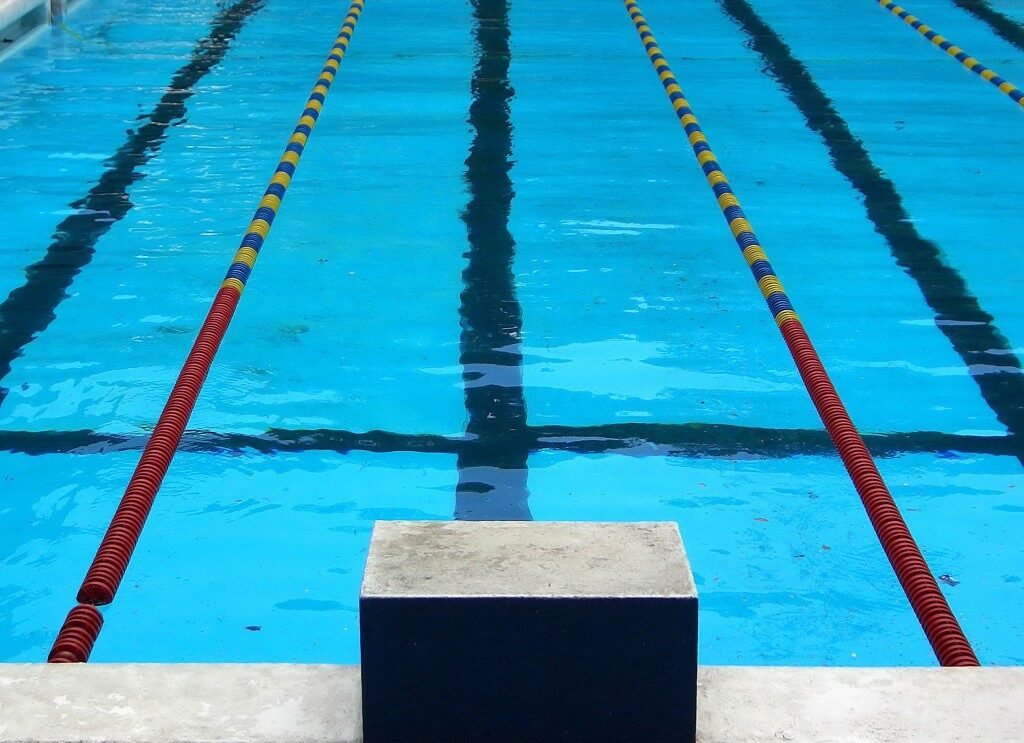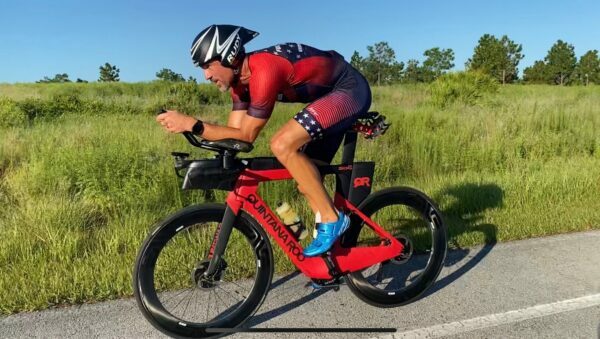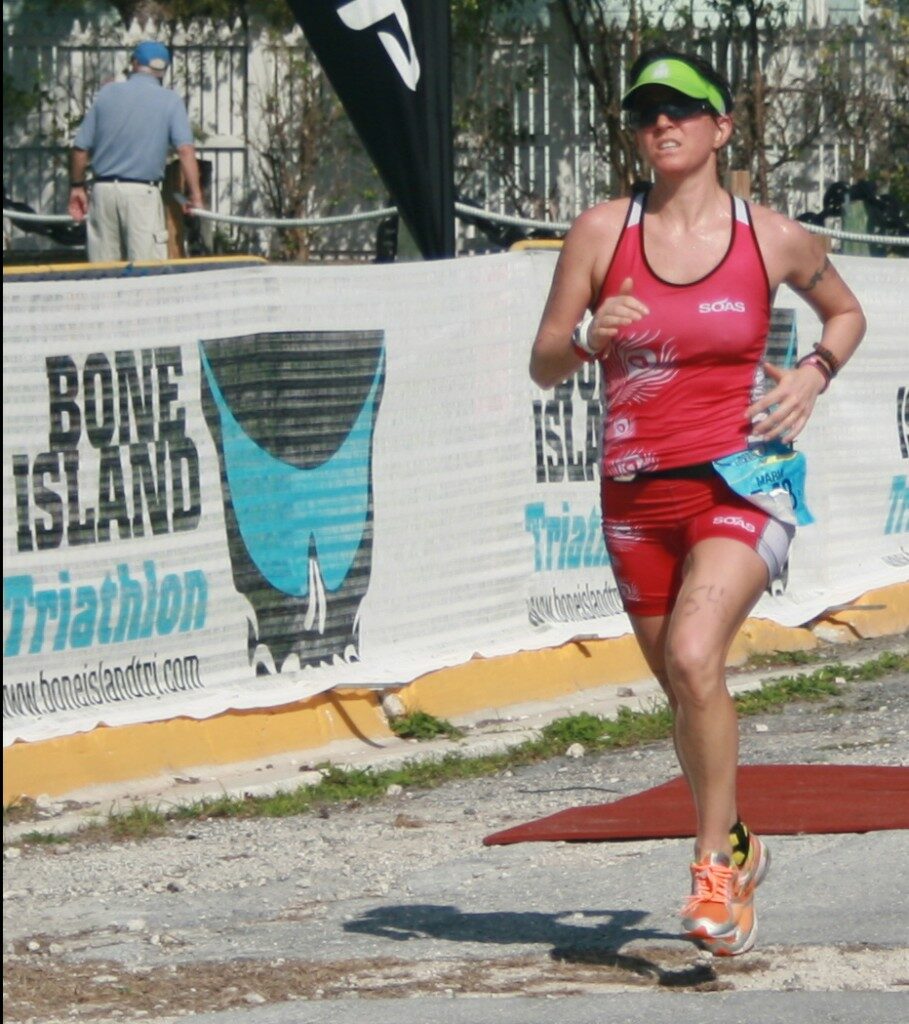Many of us have come to recognize fitness or threshold testing as 20-60 minutes of pure burning hell.
It typically involves a lot of drooling, cussing, burning sensations, and squirrely-feeling body parts. For some, vomit may be involved.
These assessments are not simply meant as terrible torture devices. They provide important information regarding our functional threshold power or lactate threshold heart rate, which in terms helps us fine tune our training efforts and intensities.
That and the fact that coaches love to make their athletes suffer. It’s a secret oath we take as part of the certification clinics. Please don’t tell anyone I told you.
In this post, we’ll explain the role of benchmark and periodic testing, provide some basic examples for field testing in swimming, cycling and running, and talk about making sense of test results in light of your day to day training.
Benchmark & Periodic Testing
Benchmark fitness tests serve a lot of functions, and should be conducted at the beginning of your training macrocycle. They provide a valuable baseline against which the rest of your season can be shaped and evaluated.
At the most basic level, a benchmark test identifies heart rate, pacing, and power zones, which you can use to gauge our intensity in any given workout.
In terms of planning the training calendar, these tests draw a line in the sand that says, “This is where I am today.” Then, you can compare that line to where you need to be in order to reach your goals.
Benchmark tests help set milestones for upcoming training, based on percentage of improvement in terms of power, pace/speed, or other indicators.
With your benchmark data in place, you can go about the business of training to improve limiters and overall fitness. After some time, another fitness assessment starts to make sense. That’s where periodic fitness testing comes into play.
Periodic fitness testing is conducted at regular intervals throughout your training program. These tests answer important questions about your training-in-progress.
- Are you showing improvement?
- Are you hitting the milestones you set for yourself at the beginning of the training plan?
- Do you need to adjust heart rate and power zones?
- Are you increasing strength in your weak areas?
Ideally, the periodic tests are similar to if not the same as the benchmark tests to allow for for useful comparisons.
There is no set formula for how often you should test. Some coaches like to do it on a regular schedule, such as every 4-6 weeks. We prefer to use periodic tests as they are needed, based on our analysis of the day-to-day training data, and the individual athlete’s response to testing.
Tests require considerable physical and psychic energy. They should not be overused. Moreover, every workout we do is a chance to assess progress – even if it’s not an official “test”. For example, we engage in overall trend analysis to observe improvements in peak power and pace, and to make comparisons between heart rate and power and/or pace over time.
Next up, we consider the types of field tests you can do in swimming, cycling and running.
Field Examples for Threshold Testing
If you have the time and cash for benchmark and periodic laboratory testing, go for it. If not, don’t sweat it. There are basic field tests you can suffer through do.
The Swim
With swim tests, you are looking for what some call a critical swim speed or threshold pace. Unlike cycling or running, heart rate information is not available for swimming. So, pace becomes the primary indicator of effort.

Swim time
For our half and full Ironman athletes, who have been swimming regularly, we like to use an 800 time trial or a 3 x 300 series. From either of these sessions, you can calculate your 100 yard/meter threshold pace. With the 800, you will take the total time for the set, let’s say it was 14:20. For the 300s, you want the average time across the 300s. Take that time, go to http://www.tricalc3.com/, enter in the time to get your 100 meter/100 yard split pacing.
Repeat the tests as needed to gauge your progress. Typically, we do a re-assessment when RPE starts to distance itself widely from the times, or as the athlete swims significantly faster over the target times given in the workouts.
Options – all of which are done at the best/hardest sustainable effort for the durations:
- 800 TT, swum at best sustainable effort. Looking for consistent or building effort across the 800. If there is too much fade, the test needs to consider that the effort was too hard at the start. A redo is a good idea.
- 3 x 300 TT, 30s rest, trying to keep the overall splits within 15 seconds of each other – if there is too much drop off, then the first set was pitched too hard. A redo is a good idea.
- 3 x 100 TT, 20s rest
- 400 TT, 10 minutes rest, 200TT
- 10 x 100, 15s rest, best sustainable effort across the 10 sets (long course athletes)
No matter which test you select, take the average 100 yard/meter split across the time trials to come up with your threshold pace. Be sure to warm up and cool down thoroughly.
**Note: For very new swimmers, we simply have them swim for 5 – 10 minutes and take note of how many laps they complete.
From the average 100 split times in any of these time trials, you can gauge your easy, aerobic and anaerobic efforts using an approximate split time. Typically, there is about a 5 second difference or so between the different efforts, going from easy, steady, moderate, hard, to very hard.
The Bike

For the bike, we prefer one of two options:
- a 20 or 30 minute time trial at best sustainable effort (experienced athletes)
- 2 x 8 minute time trials, with 10 minute easy spin between each. (beginners)
We like the 20 or 30 minute test for athletes who have a good cycling base, and are able to stay focused and push themselves without fading for the full 20 minutes. We like the 2 x 8 minute test for athletes who are new to cycling, or just getting back into training.
If you have the focus and a strong endurance foundation, you could do a 60 minute test. We recommend this only for experienced cyclists who can apply that level of effort without fading. This is easier said than done.
Whichever time trial option you select, you should include ample warm up, across various intensities, for 20-30 minutes. Cool down with easy, easy spinning for 15 minutes. Flush the legs.
You can use the average heart rate data or power data and plop that information into the various free calculators available online – or pop us an email and we’ll send you an excel copy of ours.
The Run
Similar to the bike, we like a 20 minute time trial, with a 10-15 minute warm up, for a basic run fitness assessment. We also recommend 5k races for athletes who find it easier to push the effort in a race situation, and when the timing works out to do this assessment within a race.
For less experienced runners or those getting back into running, you can do 2×8 minute time trial series.
You would then use your average heart rate for the time trial to calculate your heart rate zones. The average from the test is an approximation of your lactate threshold heart rate. If you run on a track, you could also use the pace to set track-based zones.

Races
Races serve as very useful – if not the most useful – source of field testing. You should carefully analyze race data for information about your performance. Couple your quantitative data analysis with a qualitative report of the race–>How did you feel? What went well? What didn’t? What would you do differently?
If you have a “B” or “C” priority race before your key “A” race of the season, this data can prove invaluable to help you tweak the final weeks of training.
Matching the Tests with Everyday Training
One of the biggest mistakes we can make with testing is to allow the results to be a mandate for our efforts, without thinking about how the zones play out in our day to day training.
There can be no doubt that fitness testing provides a useful starting point for understanding the level of effort we can exert at various levels of easy, aerobic and anaerobic efforts. However, zone calculators are general, and we need to check in with ourselves, paying attention to patterns in our rate of perceived exertion, or the interplay between power and heart rate (for the bike).
For example, we re-evaluated the zones for one of our Ironman athletes because of a disconnect between her training efforts, RPE, and her testing outcomes. Based on her RPE, she can maintain a higher wattage and heart rate on the bike than what her fitness test indicated originally. An analysis of 3 weeks of training data confirms her perceptions. So, we re-tested and adjusted her zones.
There are a variety of reasons why this might be so.
Perhaps she was having an off day on the day of the test. Or maybe she can maintain an aerobic effort at a greater percentage of her threshold than the generic formulas allow for. Whatever the reason, our daily comparisons between her ranges and the test data demonstrate that we need to re-evaluate her zones, and possibly schedule a re-test of a different type.
It is important to note that you should consider overall patterns in your training, and avoid making adjustments from a single day or week of training.
When scheduled with some thought and purpose, benchmark and periodic testing provide valuable information that can help us make the most of our training. If you need help designing a fitness test, or would like to schedule a free, no-obligation consultation, please contact us. We are happy to help.
